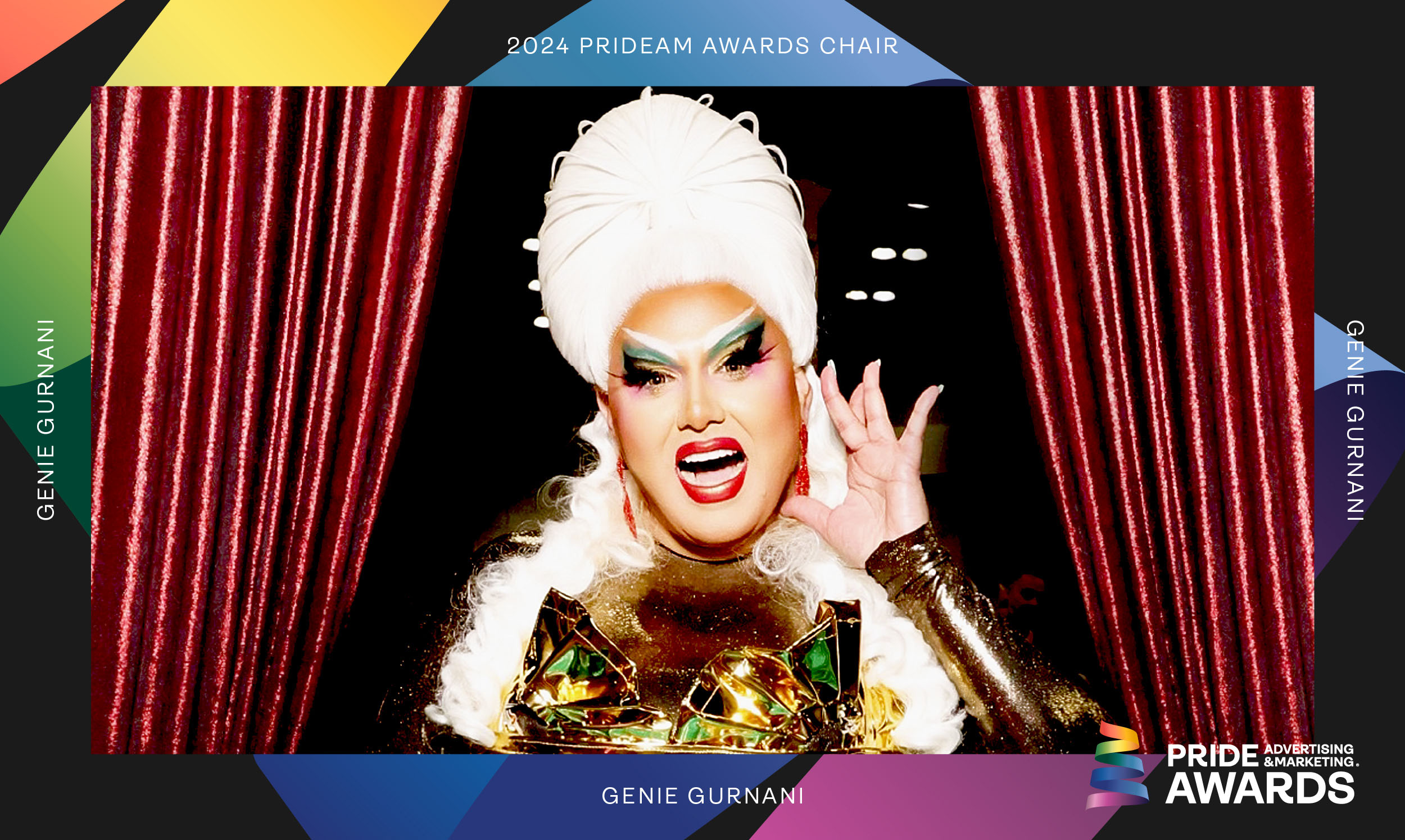The Times, Behind the Times
A recent Times article quoting Lloyds’ 2016 research revealed that 4 out of 5 ads - a whopping 80% of all the industry’s output – still features the straight, white majority.
A recent Times article quoting Lloyds’ 2016 research revealed that 4 out of 5 ads – a whopping 80% of all the industry’s output – still features the straight, white majority. If, like me, you feel that’s a curious thing for the Times to bother printing, then just wait for the headline:
Big brands shun straight, white Britain in their adverts
Shock! Horror!
Okay. Take a step back. We looked up the definition of ‘shun’.
Merriam-Webster suggests shun means “to avoid deliberately and especially habitually.”
Oxford Living Dictionaries suggests it means to “persistently avoid, ignore or reject someone or something through antipathy or caution.”
Weird, huh? Because if you gave me 80% of your attention, I’d hardly think I was being shunned.
Some might even suggest that the headline and the information contained within the article were entirely contradictory. So what kind of cognitive dissonance is at work here?
“When you’re accustomed to privilege, equality feels like oppression.” So runs the now famous and difficult to attribute quote. And here we see that erroneously perceived oppression in action, in all its quantifiable and highly questionable glory.
By error or by design (and trust me, I’ll make a case for the latter) the Times has confused inclusivity with exclusivity. They’ve construed wider invites to the party as a threat of cultural erosion. And yet you only need to look at all of the advertising around you to see that straight, white people are still in prime position. At no point have they been habitually avoided, persistently ignored or cautioned against. Straight, white families just don’t get targeted with that kind of hate.
Aside from its use of the Lloyds Bank figures, a significant chunk of the Times’ hotchpotch panic piece has been cobbled together from misrepresented research conducted by the American image and music provider Shutterstock.
Pride AM contacted Shutterstock and as you may already have guessed their press release reads rather differently to the subsequent Times article.
In the real world, knowledgeable advertisers are cleverly incorporating diversity into their campaigns. But the idea that most of the UK population might actually like these diverse people is something the Times evidently finds difficult to imagine.
Unable to conceive of inclusivity as well-received and good for business, the opening lines of the article reframe advertisers as “so worried about being accused of racism or homophobia that they are shying away from using images of white people and straight couples.”
No-one’s shying away from anything. It’s nonsense.
The Times evidently didn’t do their own research. In 2016, one of the most remembered and well-liked ads in the UK was Moneysupermarket.com’s dance off, in which openly gay actor Kyle McIntire plays the instantly recognisable Colin the Builder, displaying his flamboyant dance moves as a challenge to his high-heels-and-hot-pants rival, Dave. It’s highly unlikely that these ads would have been so tremendously popular if the UK was as homophobic and uptight about gender normativity as right-wing writers would have us believe.
To be fair to the Times, they do attempt to make a rather clumsy argument for BAME inclusion further down the page. There’s a quote from Trevor Philips, former chairman of the Equality and Human Rights Commission, in which he states:
“Businesses have to appeal to minorities but also the white population, who think it’s peculiar if they see an ad that doesn’t have minorities in it and looks like they are being sold something from the 1950s. The biggest drivers are to get the black and brown pound, but frankly white consumers think if you look like a firm selling something for an all-white Britain, it is something that went out of date decades ago. If there is change, this is businesses doing what they are supposed to do. This is good capitalism in action. Exactly the opposite of political correctness.”
And that’s followed by some strangely chosen bullet points listing examples of the ad industry’s history of racial insensitivity. One of the examples dates back to the early 1900s. We feel absolutely certain there were more relevant examples to be found.
But the kicker for Pride AM is that there’s also a slyly homophobic sleight-of-hand at work here.
“The overwhelming majority [of advertisers] that used images of gay couples or ‘non-traditional families’ admitted doing so even if it did not fit their brand,” the Times eagerly claims.
And the problem there is that the Shutterstock research says no such thing.
Firstly, it’s ludicrous to think that advertisers are purposely behaving in ways which might be detrimental to their brands. That much should be instantly obvious.
Secondly, Shutterstock’s actual research shows that where images of homosexual couples and racially diverse images are concerned, roughly three quarters of respondents said they chose those images for a more inclusive representation of society than simply to promote brand message.
Shutterstock confirm that they never addressed the question of marketers using images which ‘did not fit’ their brand.
One wonders which brands the Times might be thinking of. Do gay men not chomp down on chocolate or use mobile phones or sit on sofas? Perhaps they have some hard-hitting facts that prove that lesbian mothers don’t eat soup, but personally I’d be surprised.
It’s by no means a case of fearful advertising agencies trying to appease supposedly screeching SJWs. Big brands like General Mills, Unilever and Hewlett Packard made their own very vocal appeals for greater diversity in advertising and elicited a significant response from the industry.
But The Times doesn’t let reality get in the way of good old-fashioned bigotry. They go on to claim that half the marketers asked said “they were using fewer images of white people because they no longer represent modern society.” At no point does Shutterstock’s research make this claim and Shutterstock have very kindly confirmed this for us too.
Rather, their research makes clear that diversity – inclusive of white people – is felt to represent modern society better than using only images of white people in a campaign.
So as difficult as it may be for the haters to process, it appears that diversity works for marketers and diversity also works for the majority of the audience.
But like the snivelling, gossipy kid in the playground, the Times has tried to appeal to the bully in its readership, hoping to stir up trouble for no reason at all.
Pride AM is happy to report a small Twitter backlash against this article. So in some quarters, this veiled attempt at homophobia has utterly failed.
“This story is disgusting. Shame on you, @thetimes,” said one commentor. “Anyone outraged at Ikea advertising to young gay couples has clearly never walked through an Ikea show room,” said another.
So who in their right minds would believe this tripe?
Well a few unhappy souls evidently did. We found people on the Bodybuilders.com forum who were taken in. They quoted the headline and parts of the text and expressed their outrage at the negation of their straight, white selves as heralded by the Times. It was as if these guys were so used to being the centre of attention that it freaked them out the moment they weren’t being mentioned. And then a couple of them went on to call each other faggots and likened the UK to a faggotopia – only they bravely spelt it with a ‘ph’ so that it wouldn’t be picked up as hate speech.
On Reddit, another easily offended commentor posted:
“Apparently Muslim guys fucking white males in the pussy and ass like they are Islamic bitches sells this product pretty well.
Fucking Anglos. Get your shit together. You’re literally cucking your country and selves and break neck speeds”
Hideous word-skills aside, Pride AM was therefore able to trace a direct path from the article to increased incidences of homophobia, not to mention racism and misogyny.
Shame on The Times, and shame on their owners; News UK.
But next time there’s a reported increase of homophobic attacks, I’m sure they’ll gleefully fill their pages with it, right?
Pride AM will be unveiling their own research at the Festival of Marketing on October 6th 2017, so check the Pride AM website, Facebook and Twitter pages for updates.
On November 1st 2017, Pride AM will also be teaming up with the Gay Times to bring you the Pride Brand Makeover, presenting the best work and ideas in advertising aimed at an LGBT+ audience.
Written by Phil Clements, Member and Spokesperson for PrideAM




